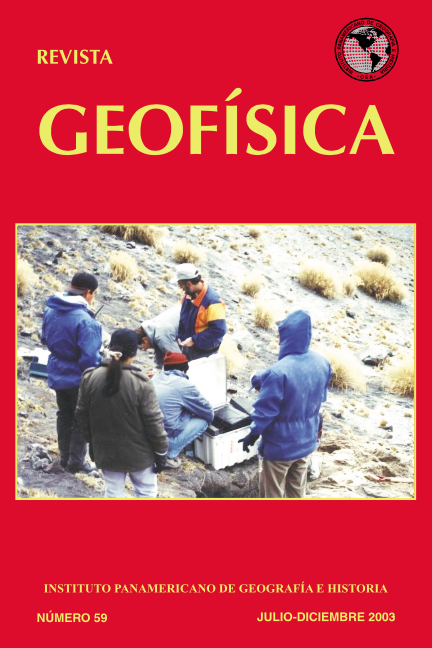Cambios físicos detectados después del sismo de 1995, Antofagasta, Chile
Main Article Content
Abstract
The July 30, 1995 earthquake in the Antofagasta Region, northern Chile, had a magnitude of Mw=8.0. The main fracture corresponded to an inverse fault de- veloped from 10 to 50 km deep, along the subduction interface between the Nazca and Southamerican plates. This earthquake occurred just south of a big seismic inactivity, where there was a magnitude M = 9.0 earthquake in 1877. As a consequence of the 1995 earthquake, a small destruction was seen, despite its magnitude in the city of Antofagasta, as the city was founded on Coastal Range rocks. The soil acceleration of Antofagasta reached a 29% gravity. The tsunami waves reached a 2 to 2.5 m high and was seen along the coasts of Mejillones and Taltal. Important physical superficial changes were observed in this earthquake, according to GPS observations, taken in 1992 and 1995, after the seismic event. These observations show positive and negative changes of elevations in different sites of the Antofagasta area. A regular trend deforma- tion is not seen in them. A NE-SW trend can be seen in the horizontal dis- placement deformation (Ruegg et al., 1996).
Gravity observations carried out in 1993 and 1994 and after the July 1995 earth- quake gave differences between 0.011 and -0.031 mGal, this is equivalent to 3.5 cm to -10 cm in vertical displacement, only if the height correction is considered. The data were taken in 9 stations corresponding to the calibration line that joins Antofa- gasta and San Pedro de Atacama. These displacements are minor from those showed by the GPS measurements. It is important to point out that the station lo- cated in Antofagasta, built almost completely on rocks, showed a lift of approxi- mately 1 cm. The values given by the gravity, probably, can be in the error range given by the method, anyway, all of them are very low, and they are spread spacially in an alleatory way.
Of continuous registers of freatic levels of 6 monitoring wells of underground waters kept by the Consulting Office INGEDOS, at approximately 80 km , south- east of Antofagasta, in the Salar de Aguas Blancas Basin, important static level changes could be observed, with a decrease in magnitude between 20 and 200 cm, between 29.07.1995 and 26.08.1995. These registers coincide with the date on which the July 30, 1995 earthquake occurred. It is important to consider that these wells are used for monitoring the underground water, not for other purposes.
Downloads
Article Details
-
Abstract1334
-
PDF (Español)1024

